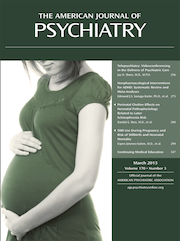Over the past few decades, a growing number of tools and methods have become broadly available to study the workings of the human brain in vivo. Subsequent to these methodological advances, researchers have made strides toward better describing and understanding the biological underpinnings of numerous disorders, including addiction. While many questions remain, Neuroimaging in Addiction represents a well-organized and well-written review of progress to date in the field. The text, written by eminent researchers working at the intersection of neuroimaging and substance use disorders research, includes descriptions of the current literature of this specialized field at a level of detail not found in comprehensive general psychiatry or addiction treatment texts.
While the text clearly recognizes and reviews substance-specific research (e.g., opioids and cannabinoids specifically), overall the text discusses the neural circuitry of addiction in general terms and even includes a chapter on “behavioral addictions,” such as pathological gambling, near the end. Given that different substance use disorders may cluster within individuals (
1) and some early risk factors may predispose individuals generally to substance dependence (
2,
3), a focus on neural circuitry common across substance use disorder diagnoses appears to have some merit. In addition, the text carefully presents information about how drugs of abuse affect brain structure and function, while also presenting information about what brain differences pre-exist and may predispose individuals to a substance abuse trajectory.
The field of addiction research has several methodological strengths, and two are highlighted in early chapters of the text. First, while development of animal models for many psychiatric illnesses may present hurdles, in the field of addictions, there are very strong animal models of compulsive drug taking. Chapter 2, drawing on that animal literature, along with human studies, provides a conceptual framework for understanding what brain processes may be critical for transitioning to compulsive out-of-control drug use. Second, in addiction research, the effects of drugs can be directly studied through drug administration. Chapter 4 reviews neuroimaging work on administration of psychostimulants, alcohol, cannabinoids, and opioids.
Subsequent chapters review work on reward processing, craving, impulsivity, cognitive function, and stress, areas covered in influential models of addiction (
4,
5). These middle chapters of the text highlight both the complexity of brain systems involved in addiction and the multiple critical roles played by some brain regions; for example, these chapters show the critical importance of prefrontal cortical regions in decision making, impulse control, and cognitive control of emotional dysregulation and stress.
The book concludes with two chapters focused on future hopes for the field of neuroimaging in addiction. The first discusses the intersection of genetics and imaging and reviews some early studies, while also outlining potential obstacles. The final chapter of the text, titled “the Diagnostic and Therapeutic Potential of Neuroimaging in Addiction Medicine,” highlights one of the main future goals for the field. As outlined in chapter 1, while the advances in neuroimaging methodologies have been rapid, they have sprinted ahead of the clinical application in addictions treatment, and early hopes that imaging would quickly have a major effect on addiction medicine have gone, as yet, unrealized. The field, therefore, continues to rely on “descriptive, symptomatic checklist criteria” for diagnosis. In the final chapter of the text, the authors outline early research showing some utility of imaging procedures in predicting prognosis and discuss the hope that imaging techniques may one day be brought to the bedside in addiction treatment, allowing clinicians to predict risk for development of later substance dependence problems, to more accurately and objectively diagnose, to select individualized treatments, to monitor treatment progress, or perhaps even to conduct neurofeedback. Despite the promise of addiction research and progress in understanding the neurobiology of addiction, this is not a treatment text. This underscores the progress still needed in the field.
The text appears to be best suited for those conducting research in the field but includes an early chapter on functional and structural imaging procedures, which is widely valuable and makes the subsequent material more accessible to those without an imaging background. While it is inevitable that a text written by multiple authors will have some between-chapter overlap, the editors should be commended for minimizing such problems in this text. Although each chapter stands on its own as an outstanding review of the area of interest, the text still hangs together as a comprehensive well-organized work. In summary, Neuroimaging in Addictions is a timely, well-organized, thorough review of the important progress at the intersection of neuroimaging and addiction research.

